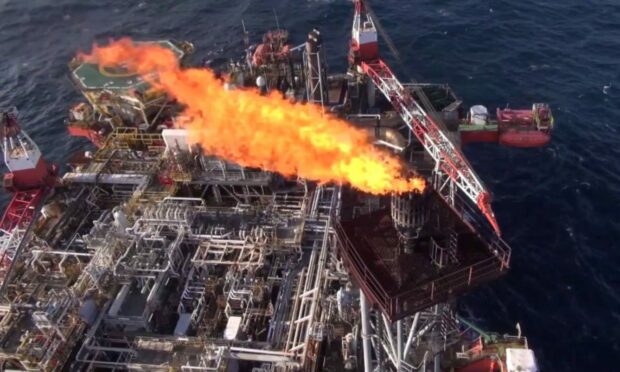A TikTok video showing an offshore worker lighting a flare on a North Sea installation has racked up hundred of thousands of views.
The video posted on June 6 by Benjamin Lunde shows a crew member fire a flare over the stack to start the gas-burning process.
In true TikTok style, the event is synced to the track Blood // Water by Canadian-American singer grandson.
Comments suggest the video may have been filmed at the processing facilities on Equinor’s Sleipner A installation in the Norwegian sector of the North Sea.
The video has already racked up nearly 800,000 views on the popular social networking site.
@benjaminrudskjrlu
As well as many commenters impressed by the footage, others asked why the gas was being burned – particularly when commodity prices are high.
Flaring is a controlled process used to burn off excess or waste gases from the hydrocarbon production process, though in the North Sea this is usually only in certain circumstances – such as the start-up of new wells, or to ensure safety.
Flaring in the UK North Sea fell to record lows last year, following a concerted effort by regulators and the industry to reduce operational emissions.
As for those questioning why a flare gun is used to ignite the stack, this practice is also fairly common.
Step Change in Safety executive director Steve Rae said: “The igniting of flares using flare guns is routine, however, it does happen on occasion under very well-controlled conditions despite the ‘wild west’ look in the TikTok video.”
WATCH: Footage shows pod of whales near North Sea oil platform
Video: Huge waves hit North Sea platform
Mr Rae said a crew member on the installation would also hold the necessary certifications to hold the firearm.
The lighting operation too would be subject to work controls such as risk assessment, a “hot work permit” and restricted access barriers, he added.
Industry is expected to achieve zero routine flaring and venting by 2030 or sooner.
The North Sea Transition Authority can halt new field development plans and existing production if flaring reaches an excessive level.


Conversation